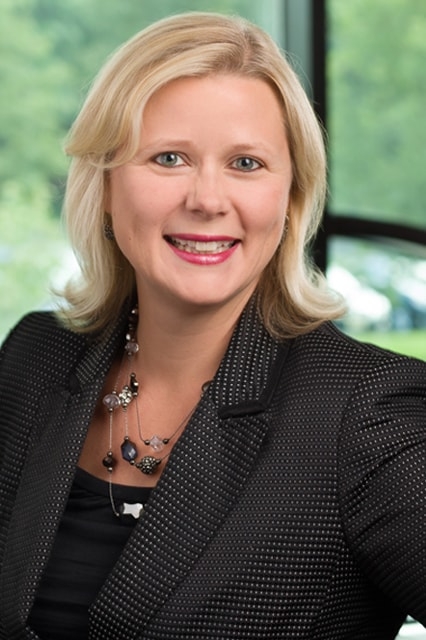Date of Public Hearing on Qualified Opportunity Zones Announced
On January 29, 2019, the Internal Revenue Service (“IRS”) issued a notice, which can be found here, announcing that the long-awaited public hearing on the Qualified Opportunity Zone proposed regulations (dated October 18, 2018, and hereinafter referred to as the “Proposed Regulations”) would take place on February 14, 2019 at 10 am. The public comment period for the Proposed Regulations expired on December 28, 2018 and taxpayers have been anxiously awaiting additional guidance with respect thereto from the IRS. The hearing was originally scheduled for January 10, 2019, but was postponed due to the recent government shutdown. The second set of regulations is expected to be issued shortly after the hearing.
In addition to clarifying concepts like “substantial improvement” and the “original use” test in general, which have gathered much attention from investors, real estate developers and other industry groups interested in Qualified Opportunity Zones, of particular interest may be the IRS’s response to both a recent letter by the U.S. Environmental Protection Agency, specifically the Office of Brownfields and Land Revitalization (“U.S. EPA OBLR”) asking for clarification of the rules in the context of brownfields and a request from a number of lawmakers asking the IRS to remove the requirement that a business in a Qualified Opportunity Zone must generate a minimum of 50% of its income from the sale of goods or services in the Qualified Opportunity Zone where it’s located.
The main purpose of the U.S. EPA OBLR letter is to obtain clarification of the “substantial improvement” and “original use” tests in the context of brownfield remediation, in hopes that future guidance will encourage investments in brownfields and other underutilized sites located in Qualified Opportunity Zones. Patricia Overmeyer, Acting Deputy Director of the U.S. EPA OBLR, says that brownfields located in Qualified Opportunity Zones should not be overlooked, calling them “one of the important first steps to revitalization.”
Overmeyer has asked the following specific clarifications and requests in the regulations as they relate to brownfields:
- Brownfields cleanup of real property should constitute “original use” for purposes of the “original use” test. In addition, the redevelopment of property that has been vacant or underutilized for a period of one year or more should also constitute “original use,” and any property that has been foreclosed upon and reverted to a local unit of government or local bank should qualify as “vacant or underutilized” regardless of how long it has been vacant, abandoned or underutilized.
- Remediation expenditures to land, including brownfields assessment, cleanup and other site preparation costs, should be counted for purposes of the “substantial improvement” test. Currently, improvements to land do not count for purposes of meeting the test.
- Gains realized from the sale or exchange of remediated brownfield property in a Qualified Opportunity Zone should be deferred and carried over into other Qualified Opportunity Zone property, without requiring that the developer engaged in the cleanup holds the property for 10 years, if such gains are reinvested in replacement Qualified Opportunity Zone property within 12 months of the sale or exchange. In essence, if this request is granted, a Qualified Opportunity Fund would be allowed to remediate a brownfield, sell it, and, as long as the total proceeds of a sale are used to purchase a replacement property within 12 months of the sale, the fund could apply the same 10-year holding period that commenced for the first brownfield site for both the gain from the sale of the first brownfield and any gain realized on the sale of a subsequently remediated brownfield site. In addition, the Qualified Opportunity Fund’s basis in the replacement property would equal the fund’s basis in the property sold or exchanged, thus preserving any gains not recognized in the event that a subsequent sale is not followed by the reinvestment in replacement Qualified Opportunity Zone property within a 12-month period.
- Deployment of funds over time (specifically, during the entire project cleanup) should be permitted to take into account the extended period of time that is necessary to complete remediation projects. Specifically, the U.S. EPA OBLR has asked for a separate 30-month window to demonstrate “substantial improvement” to the land via remediation and other site preparation activities, in addition to the 30-month window for vertical construction already established in the proposed regulations.
Comments from the U.S. EPA OBLR can be found here. With regard to the request to eliminate the Qualified Opportunity Zone location requirement for Qualified Opportunity Zone businesses, supporters of this position include Senators Tim Scott, a Republican from South Carolina and New Jersey’s own Cory Booker. The theory behind the request is that, since many businesses derive income from activities outside of a single location, imposing the above-described 50% income limitation would significantly restrict such businesses’ ability to qualify as Qualified Opportunity Zone Business, a result which these lawmakers believe is contrary to the intent of the program. CSG's Qualified Opportunity Zone Group will provide another update as soon as additional guidance is issued.
In the meantime, if you would like more information, please visit our website or contact one of the members of our Qualified Opportunity Zone Group listed below.
Jennifer M. Porter | Member | (973) 530-2071 | jporter@csglaw.com
Clem G. Turner | Member | (212) 324-7262 | cturner@csglaw.com
Bozena M. Diaz | Counsel | (973) 530-2161 | bdiaz@csglaw.com

